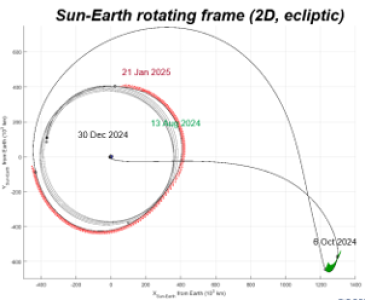Space Missions Global Optimisation for Spacecraft Guidance
Programme
GSTP
Programme Reference
GT17-155SA
Prime Contractor
AIRBUS DEFENCE AND SPACE LIMITED
Start Date
End Date
Status
Closed
Country
United Kingdom

Objectives
The objective of the activity is to increase the maturity of spacecraft guidance optimization techniques developing a prototype of a mathematical solver toolbox that is able to solve complex global optimisation problems and to apply it to a reference mission scenario, enabling a further industrial scale-up to provide a commercial product applicable to a wider range of applications of optimal guidance and control solutions.
Description
Global optimisation methods allow finding a minimum on a global search space without restrictions, unlike finding only local extrema. A general mathematical toolbox for global optimisation is not presently available; all existing solvers and solution algorithms are narrowly specialized towards particular problem types or not available in a high-performance implementation. WORHP is a local optimiser, and hence it provides good results when it is restricted to a small search space by a user-provided initial guess.
This GSTP activity proposes to develop a prototype of a mathematical global solver toolbox to be able to solve current and upcoming spacecraft optimal guidance for space missions. The following reference mission scenario is targeted: the problem of designing low-thrust transfers to and from Cis-Lunar space and beyond, i.e. to/from Earth-Moon Lagrange Point Orbits, targeting mass-efficient strategies involving Electric Propulsion (EP) to save propellant and enable these missions.
The following interdependent tasks shall be performed:
On the software development side:
- Assessment of the upgrade of the optimiser WORHP with respect to global trajectory optimisation problems and study the interaction between local and global optimisation methods.
- Specification of the global solver architecture, including mathematical methods trade-off, considering the functional, operational, performance requirements of the solver by the reference mission application.
- Implementation and verification of the solver algorithms and the transcription method in a software prototype compatible with the validation framework already available.
On the software validation side:
- Assessment of the mission scenario complexity and simulation needs for guidance design and validation, including any benchmark solutions for validation reference.
- Requirements for software functionalities, operations, performance, and requirements for software validation (simulation and performance), for the reference scenario.
- Specification of the validation framework architecture, including mission systems and operations trade-off.
- Implementation and verification of the simulation and performance tools that constitute the validation testing framework.
- Integration and validation of the software in the testing framework to assess the performance against the requirements of the targeted problem under study.
Application Domain
Generic Technologies
Technology Domain
10 - Flight Dynamics and GNSS
11 - Space Debris
13 - Automation, Telepresence & Robotics
18 - Fluid Dynamics
2 - Space System Software
20 - Structures
5 - Space System Control
9 - Mission Operation and Ground Data Systems
Competence Domain
3-Avionic Systems
Initial TRL
TRL 3
Target TRL
TRL 4
Achieved TRL
TRL N/A
Public Document
Executive Summary
